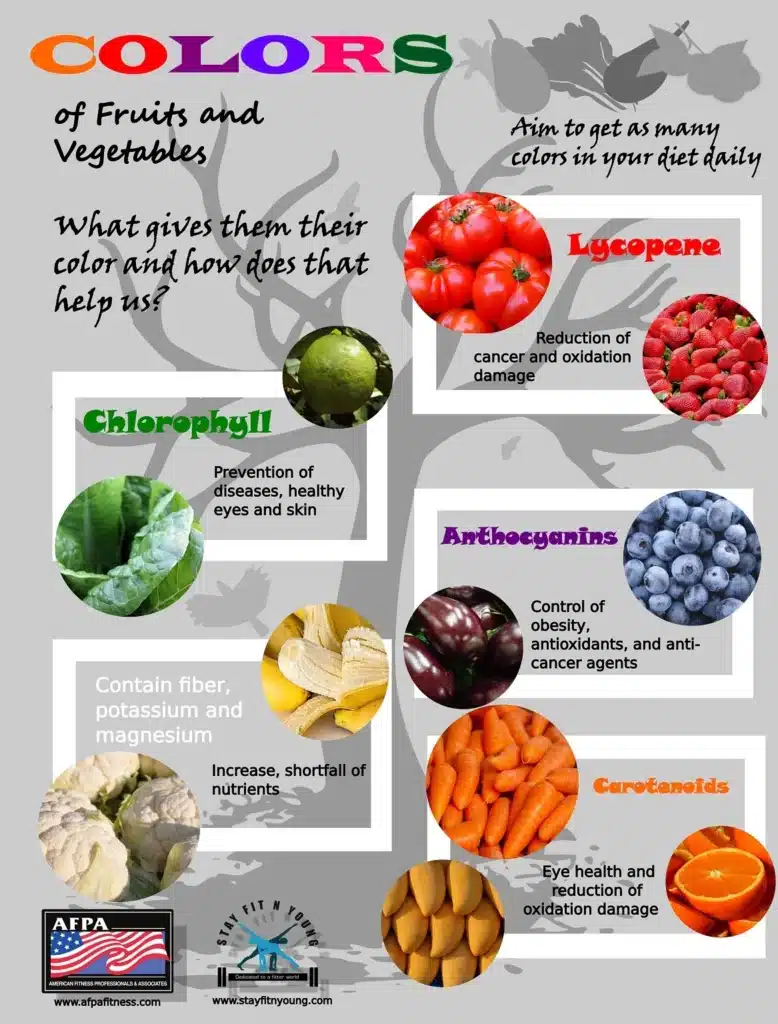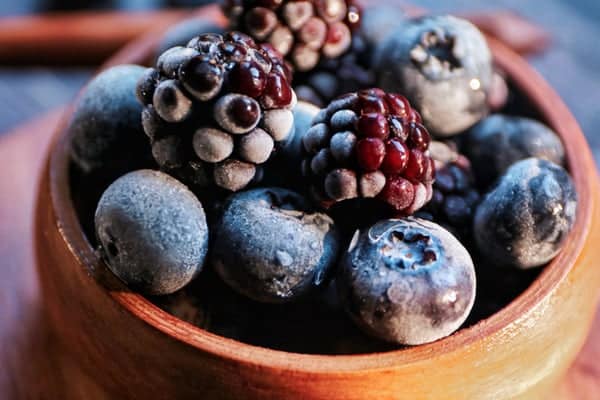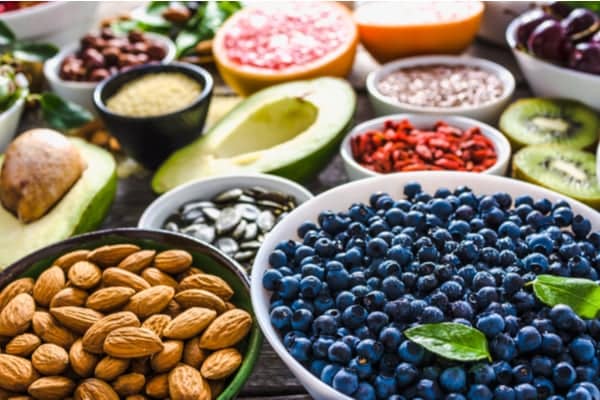As per the USDA’s Food Guide Pyramid, we should be targeting 2-4 servings of fruit and 3-5 servings of vegetables daily. However, seldom do we find any mention of the type of those fruits and vegetables. Do the different colors in these items matter, or are they only decorative in nature? (1) The fact of the matter is that the various nutrients in these food items give them their characteristic color. So, let us analyze what the various colors of fruits and vegetables indicate.
Blue/ Purple:
Various fruits and vegetables, like eggplant, blueberries, plums, and raisins can be found with a blue to purple hue. The color Blue or Purple is due to phytonutrients known as anthocyanins, (which is a flavonoid) present in these items. Plants produce these phytonutrients to protect themselves against attacks from insects and damage from UV light. (2) These phytonutrients also are advantageous to us in promoting health and preventing diseases. Studies have also found that they are effective in the control of obesity. (3, 4, 5) This group also contains carotenoids, Vitamin C, Fiber and ellagic acid. All these are antioxidants, and anti-cancer agents.(6)
Green:
Spinach, Broccoli, Wheat grass, Kale and Brussel sprouts to name a few display their green color, due to the presence of the green pigment Chlorophyll. This pigment is known to absorb light in the red and blue parts of the light spectrum and reflects the remaining which is mostly green. Thus these items appear green. (7) Chlorophyll has been known for promoting human health and prevention of diseases. (8) Also, there are two carotenoids present in green foods, which are Lutein and zeaxanthin. These carotenoids act as antioxidants in the human eyes and skin. (9, 10, 11)
Red:
The red color in certain fruits and vegetables are due to the presence of lycopene, which belongs to the carotenoids group. Thus, tomatoes, apples, strawberries, beet and pomegranates, display their red color. Lycopene has been found to reduce the risk of cancers of the prostate, pancreas and to a certain extent, of the stomach. But further studies need to be done in this area. Lycopene is thought to protect against oxidation damage, especially due to ultraviolet light exposure and tobacco smoke. (12, 13, 14)
Yellow/ Orange:
Yellow and Orange fruits and vegetables get their color from lutein and zeaxanthin, carotenoids. These also contain antioxidants like Vitamin A and C. Oranges, mangoes, yellow peppers, lemons, pineapples, pumpkin have good quantities of these beneficial substances.
If we look at bell peppers (or Capsicum Annuum), they start out green and require more time on the plant itself to ripen to yellow, orange and red. Thus the red, orange and yellow variety are usually more expensive. Lutein and zeaxanthin carotenoids are known for their role in age-related macular degeneration (AMD for short, which is basically blurring of vision due to age) and cataracts. Vitamin C is known for its prevention of oxidation damage. (15, 16, 17)
White:
Fruits and vegetables which are white in color form an important part source of key nutrients (especially fiber, potassium and magnesium), and other micro constituents. The health benefits of white color foods should not be underestimated and can increase shortfall of nutrients in our diet. Items in this category include potatoes, cauliflowers, turnips, corn, parsnips, mushrooms and onions, to name a few. (18)

Get Your Free Guide to Becoming a Holistic Nutritionist
Learn about the important role of holistic nutritionists, what it takes to be successful as one, and how to build a lucrative, impactful career in nutrition.
Conclusion:
Fruits and vegetables have their distinctive color due to presence of various phytochemicals. Various nutrients are present in different quantities in various foods. You should ensure that your daily diet compromises of as many colored fruits and vegetables to get a combination of the health effects.

Overall reference:
Colors of fruits and vegetables and health by The European Food Information Council (19)

Get Your Free Guide to Becoming a Holistic Nutritionist
Learn about the important role of holistic nutritionists, what it takes to be successful as one, and how to build a lucrative, impactful career in nutrition.



